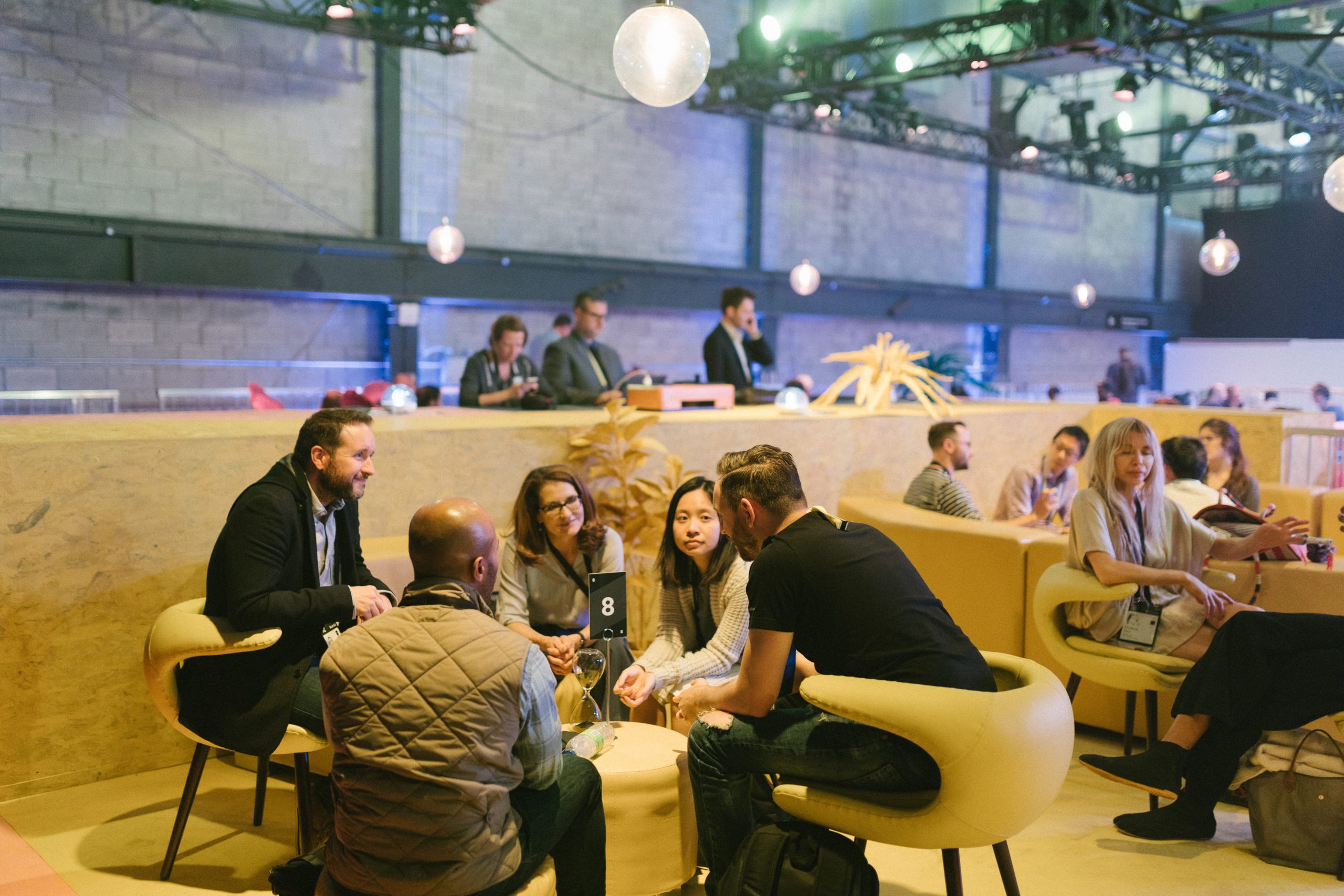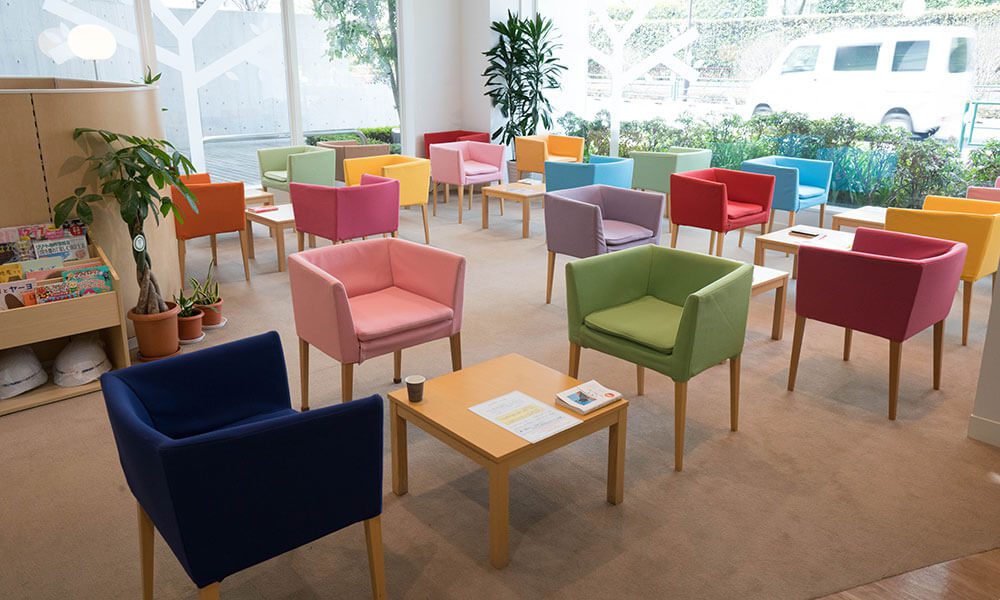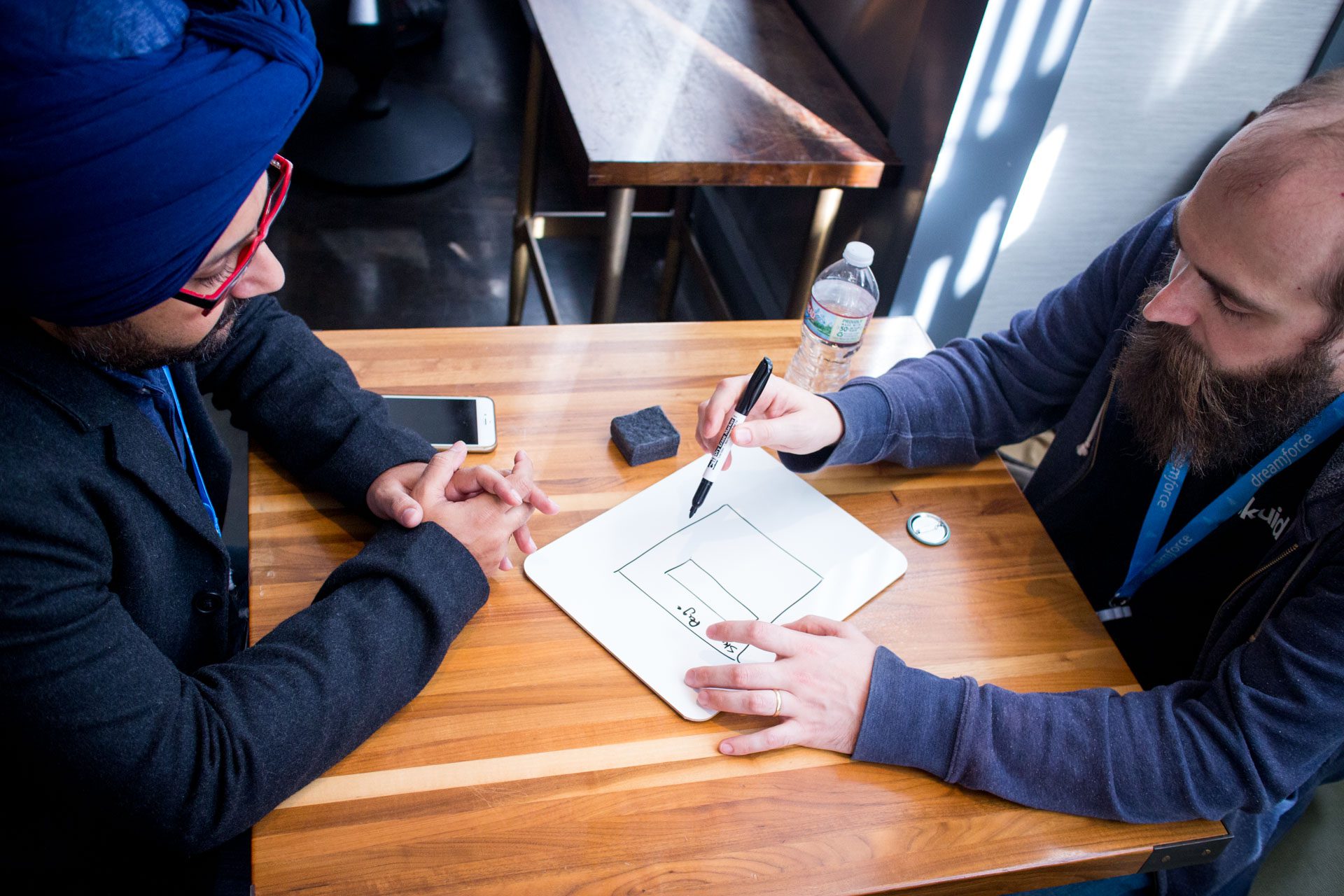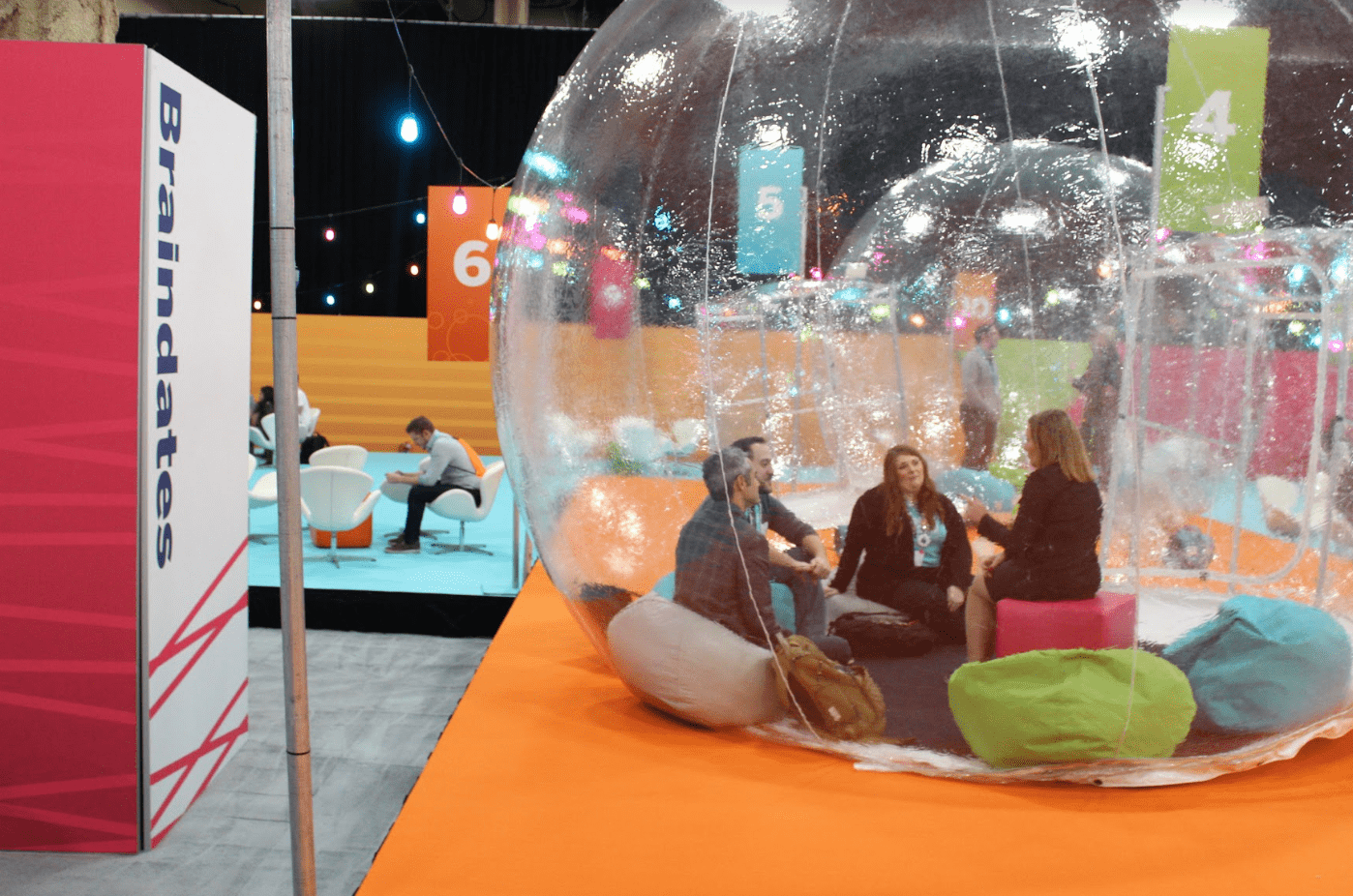If you read our last piece on why collaborative learning is the future of event-networking, you are already familiar with e180 as the creator of Braindate, an online platform and an in-person experience that helps participants at events meet for topic-driven, knowledge-sharing conversations called braindates.
Since our founding, we have created collaborative learning experiences at iconic events around the world. Translation: we have helped participants make new connections, unblock their learning goals, and even find inspiration, through the act of exchanging knowledge with one another.
When it comes to event networking and braindates, we predicted that collaborative learning will soon come to define the participant event experience. This feels more relevant than ever in 2020 when participants are (rightfully) expecting a degree of personalization from the events they choose to attend.
In the 2020 trend report, Endless’ Kaitlin Colston writes, “not everyone at your event will be in the same place in their journey. Personalization allows each attendee to get exactly what they need.” We can say this from experience, collaborative learning is one of the most effective ways to bring personalization into the context of networking and learning.
e180 hosts knowledge-sharing conversations in a dedicated space at events called the Braindate Lounge. Over the years, we have co-created these collaborative learning spaces with some of the most brilliant event profs in the world.
Now, we’re ready to share our knowledge on how to create a space that gets your participants ready and excited to learn from each other.
What are collaborative learning spaces?
If you work in the field of education, you may have heard about the collaborative learning movement, where forward-thinking educators are reinventing the way in which students around the world learn. They are flipping the script on the broadcast-style education where one person teaches all, to create a more inclusive experience that takes into account different people’s learning needs.
Collaborative learning spaces are designed with the aim of encouraging both small and large groups of people to come together to solve a problem, learn something new, or simply have a meaningful conversation.
 Braindate Lounge at the 2018 C2 Montreal. Source: e180
Braindate Lounge at the 2018 C2 Montreal. Source: e180
As a company founded by one of these forward-thinking educators, we continuously draw our inspiration from the world of education, especially when it comes to events. The way we see it, collaborative learning spaces should be a part of every event. After all, a conference or a professional meeting is often one of the few opportunities for adults to gather somewhere, purely with the purpose of learning and growing as professionals.
The psychology of learning spaces
We already know that the act of learning something collaboratively has many positive effects on people, that range from forming a positive support system and strengthening bonds of community, to reducing anxiety and improving a learner’s self esteem. But what about the space in which collaborative learning takes place? What do planners need to know before dedicating their time to creating such an environment?
Your environment affects you emotionally
Researcher Ken A. Graetz writes that “physical characteristics of learning environments can affect learners emotionally, with important cognitive and behavioural consequences.” Simply put, the design of a space can have an effect on the mood and behaviors of the people inside that space.
We already know that if hundreds of participants squeezed into an uncomfortable, crowded, noisy room, they would be less-able to engage with the event content. Conversely, research shows that creating a comfortable environment for participants has the opposite effect: it will inspire a positive emotional state that could improve a participant’s ability to learn, and may also create feelings of attachment to the place itself.
This insight is particularly relevant to event planners who produce events at the same venue year after year. Creating a positive learning environment could contribute to participants developing a fondness for the venue itself, and encourage them to return to the event.
Design can help create a sense of autonomy among your participants
Collaborative learning spaces should encourage active learning. That is, participants in these spaces will do more than just passively listen to each other: they will engage in conversation, and think critically about what they’ve learned.
Steelcase’s insights on active learning spaces notes that “active learning involves a level of autonomy for individuals and groups to determine how and where they learn best.” In order to effectively learn from each other, your participants must have the ability to choose where they want to learn, and how they want to learn from one another.
 Source: Unsplash
Source: Unsplash
Planners can embed these different environmental learning options in design elements. Having access to different seating arrangements, or even tools like drawing boards, pens etc can contribute to your participant feeling autonomous. For inspiration on different seating arrangements to promote collaborative learning, check out Steelcase’s Palette of Place.
All of the above leads us to the most crucial element of designing a vibrant collaborative learning environment. And that is the feeling of joy…
Always design for joy
In an interview for Convene Magazine, Ingrid Fetell Lee, best known for her book, Joyful: The Surprising Power of Ordinary Things to Create Extraordinary Happiness, says that the power of joy is that it creates a sense of togetherness.
“Joy…creates a sense of cohesion in groups. It helps groups to gel… It is the most contagious of our emotions. It spreads quickly within groups. It spreads because of our body language, our expressions, our tone of voice, and that can actually have really surprising effects, even from a business perspective,” says Lee
Learning from, let alone approaching a stranger, can be quite daunting. And yet, that is exactly what we ask our participants to do every time we bring Braindate to an event. A collaborative learning environment requires participants to feel safe, comfortable, and open to sharing their knowledge.
So, designing these spaces with elements that might add a bit of joy (natural light, round tables, bright colors, elements of nature) can go a long way in putting a participant in a positive state of mind.
 Source: Ingrid Fetell Lee / Convene Magazine
Source: Ingrid Fetell Lee / Convene Magazine
As Lee says, if you want to design an “experience that people are going to take back into their lives and be excited to talk about with other people and share what they learned with their colleagues — if you want that sense of cohesion and contagion, there really is no better emotion than joy.”
Decide what you want learning to look like before you begin designing the space
What do you want your participants to take away from the event? Do you want them to learn continuously? Or do you want their learning to be limited to certain moments during the event?
Understanding what you want learning at your event to look like is just as important as producing high-quality event content. What knowledge you want your participants to gain, and how you want them to gain it, will influence how you design the space where this learning takes place.
Determining the above requires a process. This is what educator David Jake has suggested: Begin with clearly identifying what you want learning to look like at your event. Based on that, determine a set of design goals that reflect those expectations. Finally, consider a prototype process that helps your test different space designs ahead of the event.
How to design a collaborative learning space
While collaborative learning spaces take many different forms, they all share the key elements listed below. Whether you’re organizing a session, a workshop, or even a networking hour, we invite you to use these principles to design a space that encourages your participants to learn from each other:
A collaborative learning space must accommodate learning in all sizes:
 Braindate Lounge at the 2019 SOCAP (Social Capital Markets) Conference. Source: SOCAP
Braindate Lounge at the 2019 SOCAP (Social Capital Markets) Conference. Source: SOCAP
Your participants should have the choice to learn from each other one-on-one, in small, and large groups. Design a space that gives them this choice. This means, you guessed it, seating arrangements! Let your participants organically choose between a large picnic table or smaller coffee tables.
A collaborative learning space must be flexible:
 Source: Kayri Shanahan
Source: Kayri Shanahan
Design your space to be flexible, both physically, and in how it’s used. Your participants should be able to move the furniture as they transition from small to large groups. The furniture itself should be varied. Give them the choice between tables, sofas, standing desks or even bean bag chairs.
A collaborative learning space should accommodate different styles of learning:
 Source: e180
Source: e180
Some people are visual learners, while others need to take notes. Your collaborative learning space should try to accommodate your participants varying learning needs by giving them access to tools like markers, drawing pads, whiteboards etc.
A collaborative learning space should spark communication and creativity:
 Braindate Lounge at the 2019 Tableau Conference. Source: e180
Braindate Lounge at the 2019 Tableau Conference. Source: e180
The environment you design should inspire your participants. This means being unafraid to get creative with the various design elements. For example, including unusual (but comfortable) furniture in your space, featuring conversation prompts on signage, or adding fidget toys or legos to your tables.
Collaborative learning is so much more than another trendy addition to the event ecosystem. It is a mindset that we at e180 encourage event planners to adopt so they can create community out of an event, and empower their participants to take their learning into their own hands.
Listed above are just some of the few ways in which you can leverage the space around you to make sure that your attendees walk away feeling the pure joy of having learned something new. And in that process, experience growth that is not only professional but personal.









